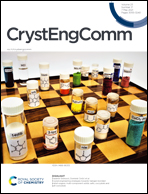Understanding the planar conformations in diarylsubstituted heteroarenes: structural and theoretical insights†
Abstract
To access the applications of a conformationally flexible molecule, thorough understanding of even the weak contributors to a particular conformation is necessary. We have synthesized and X-ray characterized a series of six diaryl-substituted heteroarenes in order to analyze the role of unconventional intramolecular CAr–H⋯N/O vs. conventional H-bonds on the preferred planar geometry of such molecules. The distance well below the sum of van der Waals radii in their solid state structures indicated the existence of intramolecular CAr–H⋯N/O interactions. Consequently, the theoretical study was carried out to analyze the energies associated to each of these bonds using the quantum theory of “atoms-in-molecules” (QTAIM) and also the NCI plot. The results indicate that the unconventional C–H⋯O H-bonds involving aromatic H-atoms and the O-atoms of o-methoxy or o-hydroxy substituents in 2, 3a and 3b despite being weaker (dissociation energies around 3–5 kcal mol−1) are relevant and contributing to their planar geometry along with various other factors. However, the electronic repulsion between the lone pair of the nitrogen/oxygen atoms and the neighboring π cloud in these molecules likely contributes more to their preferred planar conformation.

- This article is part of the themed collection: Supramolecular & Polymorphism


 Please wait while we load your content...
Please wait while we load your content...